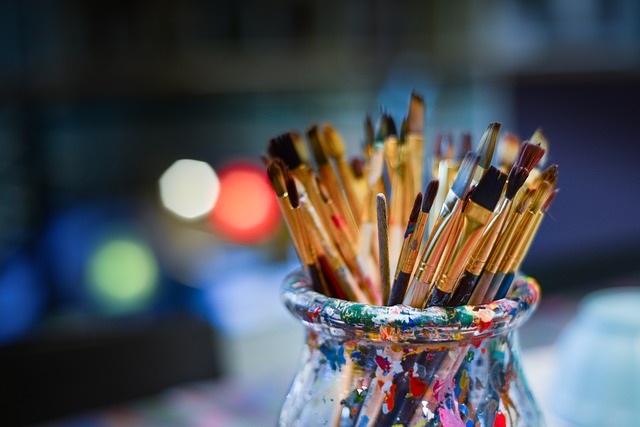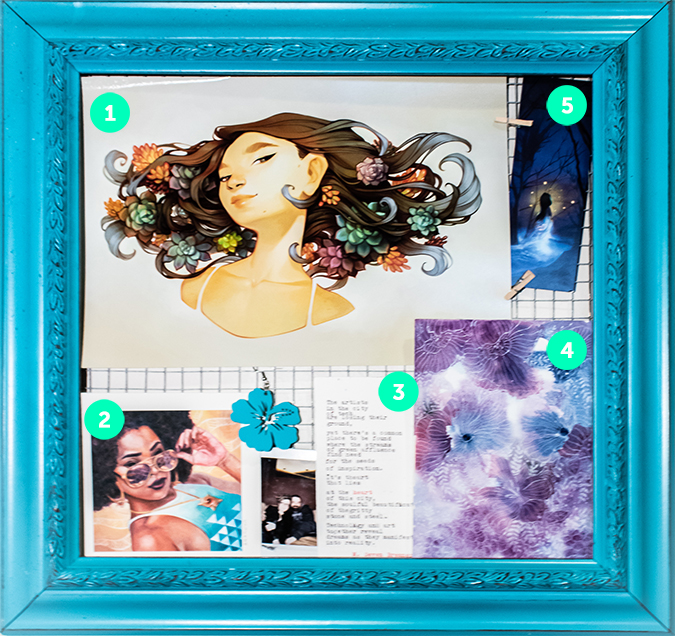Making space for art buys! A Convention-goer's User Guide
As an artist who booths at conventions and is an art collector – there is a common theme I hear and have difficulty with as well when it comes to art purchasing.
“I have this amazing art. Where can I put it?”
“I’m out of wall space. I want to buy it, but what do I do with it?”
“My place is too small to collect all the prints I want!”
“I bought this but haven’t hung it yet!”
“I want art to be displayed, not stored.”
I’m also from the Seattle area, where the average apartment size is noted as 731 sq. ft as of April 2019. For World Art Day 2019, I’m sharing a few methods to making more space for awesome art. I’ll also outline pros and cons I’ve found for each method.
Custom Framing
By far this is my preference and go-to. I prioritize originals, giclée, and signed works for custom frames. If you can afford it and have space for it, great! If not, re-assess your space as well. Just because it can’t hang at eye-level doesn’t mean you can’t create an amazing salon-style display!
Frame stores also often have designers who will add a special level of elegance and heightening to the art with their frame creations. Or, if you have an idea for custom frame - you can purchase and frame it yourself.
Pros – Visible, beautiful, ideal use case
Cons – $$ to $$$, limited space
Coffee Table “Art Book”
This has been a prior go-to for me. That is, until we got rid of our coffee table.
Create this by buying an empty picture album or portfolio case of choice. Then, one by one, begin to fill in the empty slots with each convention or online art buy. A great way to get a diverse group of artworks, while keeping it all in one place for easy access and viewing. Just be sure to keep a handle on your coffee mugs!
Pros – $, visible, accessible.
Cons – Coffee table required, possible spillage in “splash zone”
Acid-Free Storage
Necessary and best for preservation unless framing is acid-free/archival. Sometimes framing art can’t be prioritized how we’d prefer. Or we want to store items for longevity.
For this, I use an acid free wedding dress box from The Container Store due to rectangular shape, with acid-free tissue paper. This allows everything to be kept with little degradation until it can be framed properly. Please only store acid-free content here, otherwise acid elements will degrade surrounding content over time. Definitely consult an archival specialist if art pieces need assured acid-free moisture-safe preservation.
Pros – $$, Stores art without acidity.
Cons – You can’t see the art. Potential surrounding degradation if some of the art is not acid free.
Travel Cases
Stickers, mostly. At one point in time my laptop cover ran out of sticker space. I live paint and attend various events, so I found my pelican case (the BEST) that I custom plucked to fit my Wacom Cintiq Touch Screen had ample room for stickers to be added.
Anytime an artist has stickers available that I like, I now have a place to add it to as a living story. So far, I’ve been collecting various stickers for over a year and the space is 1/3 covered. If you travel, play guitar, or other – this is a great approach for smaller stickers and decals.
Pros – $ to $$$, large collections. Fun to build a story of events and travels.
Cons – Not all stickers stick :/ Limited art visibility unless cases are stored in an accessible area after use.
Frames with Wire or Corkboard interiors
(Artist credit listed below)
Create or purchase a frame with wire grid or corkboard on the inside. I purchased mine from a vendor at the Fremont Sunday Market. Art can be mounted with little clasps or pins. The art set at the bottom of the frame can be inserted in to groove, providing tolerances are tight enough. That way you can add originals or other items without worrying about having to pin or clasp them. Other images can be attached with clasps or pins, but gently! Clasps or pins can leave marks on the art depending on the type of clasps and care upon hanging. Recommend testing first with sample sheets before hanging your most beloved prints!
This is a great method in that it allows you creative choice and curation. You can also show a large array of art in a single frame, resulting in a smaller space footprint.
Pros – $, visible, accessible, has character, great for limited space.
Cons – Can leave marks on prints from clasps/pins if not careful.
Awesome Artist credit for #5 Images:
Print by Lois Van Baarle
Art by Alix Branwyn
Poem by M. Seven Brenner
Art by Jessica Douglas
Uniting the Heavens written by
Emily EnglishPrint by Wendi Chen
Print by @heathersketcheroos
Postcard by Wendi Chen
Ranger Rabbit print by @alien
Paladin Rabbit print by @alien
The Iron Cast series by Chris Casciano
Lil Tortuga @sirencovestudios
Bookmark art by Jeszika Le Vye
Little Rabbit from Push/Pull Art Gallery
Art Books, Pins, and more!
Another great way to continue your collection is to direct focus to smaller highlights for your bookshelf, office desk, or wardrobe.
Artists will do limited runs for Kickstarter’s Make 100 such as Amanda Makepeace with the moth series creations. Or begin with art cards to give away or add to your work desk, or accrue various sketchbook collections.
Pros – $, space saving
Cons – None, unless you don’t want to give away your art cards to others…
Have any additional suggestions, or art collection tips that work for you from convention purchases or elsewhere? Feel free to send an email direct for future article considerations or leave a message below!
Note: No form of compensation received for writing about or directly linking to contents in this article. Article is written to help solve for a common need I found myself in, as well as others.
Cheers!









